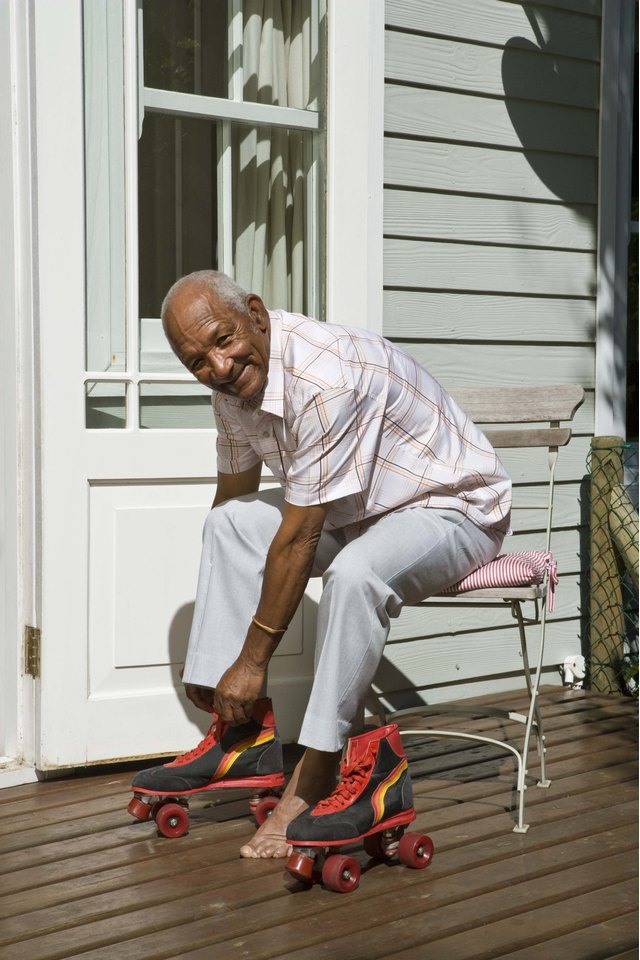Does Rollerskating Work out Your Stomach?

Skating on old-fashioned, four-wheeled skates is a fantastic activity for burning calories and improving your cardiovascular fitness. The movements that you perform while rollerskating obviously provide an excellent workout for your leg muscles. The core workout that you receive from rollerskating may be less evident at first glance but is equally substantial, as you must engage your core to remain upright and moving forward.
Core Workout
When you extend a skating leg forward your core muscles engage, starting from your lower back and abdomen and transferring energy to the extend leg. During this momentum transfer your core muscles must engage to maintain steady balance to keep you on your skates and off the rink. When your back leg strides forward toward the core you receive an isometric benefit as the previously extended muscles gradually contract and your core provides support for the equivalent and opposite skating stride.
Abs
The rectus abdominis muscles, which are more commonly known as the abdominal muscles or abs, provide the greatest amount of core support during rollerskating. Your abs control the tilt of the pelvis and are thus heavily implicated while thrusting your legs forward and back during the skate. Your ab workout is further intensified because the muscles are responsible for maintaining the positioning of your lower spine, which must remain fully erect to skate without losing balance.
Psoas
After your ab muscles begin the muscular thrust that propels a leg forward the rotational movement proceeds through your psoas, which is one of the two core muscles commonly known as a hip flexor. When you look at your stomach you can find your psoas muscle along the ridge of your abs, roughly situated over the inner half of your pelvis. The psoas connects your hip region to your lower vertebrae, maintaining back support and helping to keep your core erect throughout the rotation.
Iliacus
The rotational momentum of skating continues from the psoas to the iliacus muscles located on the outer portion of the stomach region. Along with the psoas muscles, the iliacus muscles make up your hip flexors. Skating provides an isometric workout to the iliacus muscles, improving the definiton of the outer abdomen region directly above the hip.
References
Writer Bio
Dan Howard is a sports and fitness aficionado who holds a master's degree in psychology. Howard's postgraduate research on the brain and learning has appeared in several academic books and peer-reviewed psychology journals.
